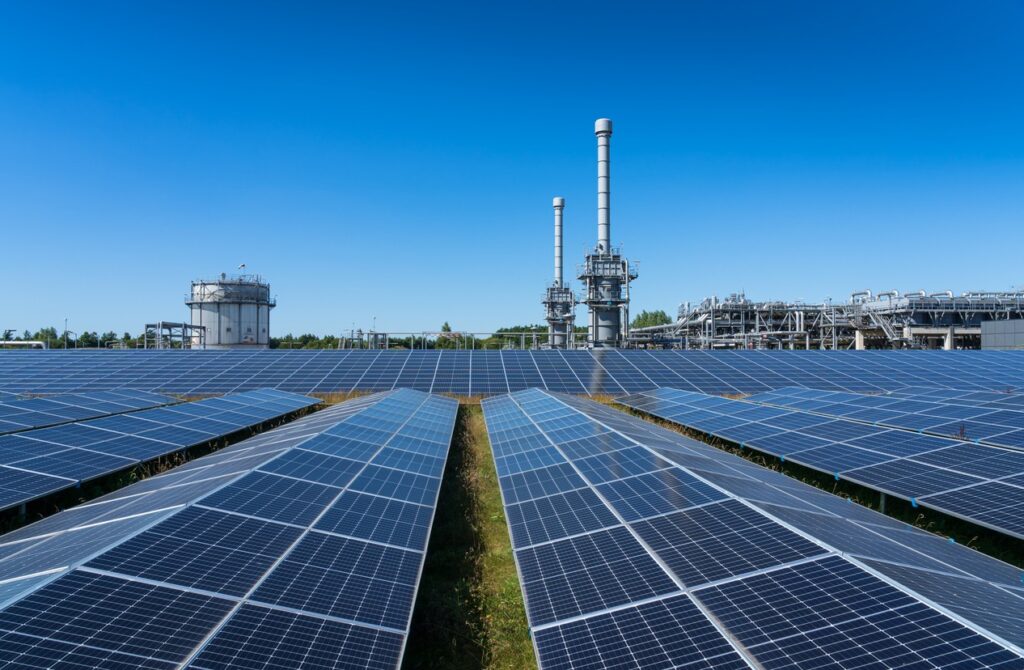Solar for Industry
Solar panel systems are designed to generate electricity by capturing sunlight and converting it into usable power. When installed on an industrial facility’s roof or on nearby land, solar panels can provide a significant portion of the facility’s energy needs. Here’s how they help lower electricity bills.

A. Offset Your Energy Consumption
When a solar panel system is installed, it generates electricity during daylight hours, which can be used to power equipment, machinery, lights, and HVAC systems within the facility. By using the energy generated by the solar panels, industries can reduce their reliance on grid power, leading to lower energy consumption from the utility company and reduced electricity bills.
- Daytime Energy Usage: Many industrial facilities operate during the day when solar panels generate the most power. This is especially beneficial for industries with high daytime energy usage, such as manufacturing plants and warehouses.
B. Net Metering and Selling Excess Power
For industries that generate more electricity than they need, net metering allows them to send excess energy back to the grid. In return, they can receive credits or payments from the utility provider, further offsetting their energy costs.
- Sell Excess Power: If the solar system produces more energy than the factory uses, the excess electricity can be sold back to the grid, reducing or even eliminating electricity costs altogether during low-usage periods.
- Energy Credits: Many regions offer financial incentives for companies that contribute clean energy to the grid. This could include energy credits or direct payments.
Key Benefits of Solar Panel Installation for Industrial Electricity Savings
A. Immediate Reduction in Energy Bills
The most immediate benefit of installing solar panels is the reduction in electricity costs. By generating a portion of the electricity needed to run the facility, industries can cut back on the amount of power purchased from the grid. Depending on the size of the system and the amount of energy generated, solar can reduce electricity bills by Upto 50% or more.
B. High Return on Investment (ROI)
Solar panel systems are a long-term investment with high ROI. While the initial capital outlay for installation can be substantial, the system will continue to provide savings on energy bills for 25+ years (the typical lifespan of solar panels). In fact, many industrial facilities start seeing a return on their investment within 2–3 years, with savings continuing to accumulate over time.
If Interested click call button or fill enquiry form:


